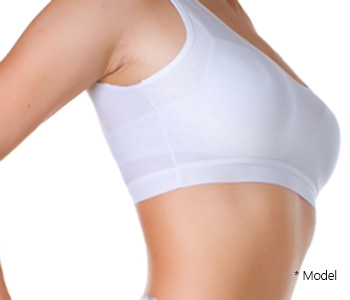Beverly Hills surgeon explains what breast reconstruction is, types of surgery, and what to expect
Women who have breast cancer may choose to have breast reconstruction as part of their treatment plan. This surgical procedure rebuilds and reshapes the breast. There are different types of breast reconstruction and different options. Breast reconstruction is an individualized procedure based on each patient’s needs, type of cancer, therapies, and body type. Located in Beverly Hills, CA, Dr. Dennis Dass explains what breast reconstruction is and what to expect from the procedure.

Why choose breast reconstruction?
Choosing to undergo breast reconstruction is a personal decision, one that may not be right for every woman. Speaking with a plastic surgeon ahead of time helps clear up any questions or concerns and enables patients to make an informed decision. Any surgery involves scars, but those scars fade with time. For those who opt to have reconstructive surgery, the benefits of the procedure include the following:
- Having a balanced figure in a swimsuit or bra
- Regaining breast shape
- Feeling better in her own body
Breast reconstruction surgery is performed following a mastectomy, lumpectomy, or congenital deformities. The procedure improves the breast appearance by restoring one or both breasts to the normal size, shape, and symmetry. Reconstructing the breasts is a multi-step process requiring more than one surgery. The initial surgery may be in conjunction with the mastectomy or may take place later.
Types of surgery
Breast reconstruction procedures are lumped into two general categories, implant-based or flap reconstruction. When implants are used, they form the mound or shape of the breast. However, patients must have enough breast tissue to cover and support the implant. Flap reconstruction uses tissue and fat from another area of the patient’s body to recreate the breasts. Regardless of the procedure chosen, breast reconstruction is a highly individualized procedure. The type of surgery selected depends on the patient’s body type, the type of mastectomy, and the current cancer treatments.
For implant-based reconstruction, the implants may be placed above or below the pectoral muscle. These procedures are done in combination with the mastectomy. The result is an immediate breast mound. After the mastectomy, the plastic surgeon preps the body and places the implant in the appropriate place. If there is not enough tissue to cover and support the implant, tissue expanders may be necessary first to stretch healthy tissue before implants can be placed. Tissue expanders have an accessible port so the surgeon can periodically fill the expanders with saline to gradually stretch the skin.
(855) 496-4646
OR
Breast reconstruction procedures
In general, from start to finish, breast reconstruction procedures involve the following steps:
- Anesthesia
- Flap technique
- Tissue expander placement
- Breast implant placement
- Nipple and areola reconstruction
In some cases, the mastectomy or radiation therapy may not leave enough breast tissue to immediately cover and support a breast implant. In these cases, a flap technique is required to take skin and fat tissue from another area of the body, usually the abdomen, buttocks, thigh, or back. There are various flap procedures. In a TRAM flap procedure, abdominal muscle, skin, and fat are used to reconstruct the breast structure. In a DIEP or SIEA flap, muscle is not transferred. Just the skin and fat tissue are used. Finally, a latissimus dorsi flap uses tissue from the back. This includes muscle, skin, and fat tissue. This flap usually does not form the breast mound but instead is created to cover and support the breast implant.
When there is not enough tissue to form the breast mound, tissue expanders may help stretch the healthy skin to prepare for an implant. The recovery period following tissue expander placement is generally less extensive than flap reconstruction. This is because tissue expanders do not require a donor site for tissue. However, the tissue expansion process is lengthy. Several office visits are needed following the placement of tissue expanders. The physician gradually fills the expanders with saline to slowly stretch the skin. Once the skin is ready, a second surgery is needed to replace the tissue expanders with breast implants.
Breast implants may be used with or in place of flap reconstruction depending on the patient’s unique situation and body type. In some cases, a temporary implant may be used until a flap reconstruction can be performed. Saline and silicone breast implants are available. Implant only reconstructions usually require tissue expansion first.
Once the skin and body have healed, nipple and areola reconstruction can be performed to complete the breast aesthetic. This may be done with specialized skin folding to create the proper shape and/or with tattooing procedures. If needed, breast revisions may be done to perfect the breast shape and contour and to improve the appearance of a donor site if flap reconstruction was performed. Liposuction or fat grafting may be done.
Recovery and results

Following breast reconstruction surgery, bandages or gauze may be applied to the incisions. The breasts may be wrapped with an elastic bandage or support bra to minimize swelling and provide support. In some situations, a small tube may be placed temporarily to drain excess blood or fluid. The surgical team provides specific post care instructions. This includes caring for the incisions, changing bandages, and taking the proper medications. Follow the surgeon’s instructions to avoid bumping or damaging your incisions. If you have questions or concerns about movements, care, or follow ups, be sure to contact your medical team.
The recovery period is unique to each patient, depending on the exact reconstruction process. As the body heals, swelling and bruising will begin to subside. The breast shape and position will improve as the swelling goes down. Initially, patients may experience numbness or little skin sensation. Sensation may return and improve over time. The scars will fade somewhat and improve in appearance, but they may not fully disappear. Ultimately, the results of breast reconstruction can help lessen the physical and emotional toll from a mastectomy.
To learn more about what breast reconstruction is and what to expect, contact Dr. Dennis Dass in Beverly Hills, CA. Schedule your appointment today to discover your options. Call (855) 496-4646.
Back to Breast Reconstruction Page

About Dennis Dass, MD, PharmD
Dennis Dass, MD is a top Beverly Hills plastic surgeon, focusing on boosting the confidence of his Los Angeles, California patients with natural and beautiful results. He provides a range of surgical procedures for the body, laser skincare, and non-surgical procedures. As a Board-certified plastic surgeon, he performs hundreds of cosmetic procedures every year.Dr. Dass earned his Medical Doctor degree from the University of New Mexico School of Medicine in Albuquerque, NM and his Doctor of Pharmacy qualification from the University of New Mexico College of Pharmacy. He underwent a six-year Integrated Plastic and Reconstructive Surgery Residency at the University of Kansas. He is a Diplomate of the American Board of Plastic Surgery, a Member of the American Society of Plastic Surgery, California Medical Association, and Los Angeles County Medical Society.
Dr. Dass has received numerous accolades including Top Plastic Surgeon designation from many reputed organizations. Connect with Dr. Dennis Dass on Linkedin.














